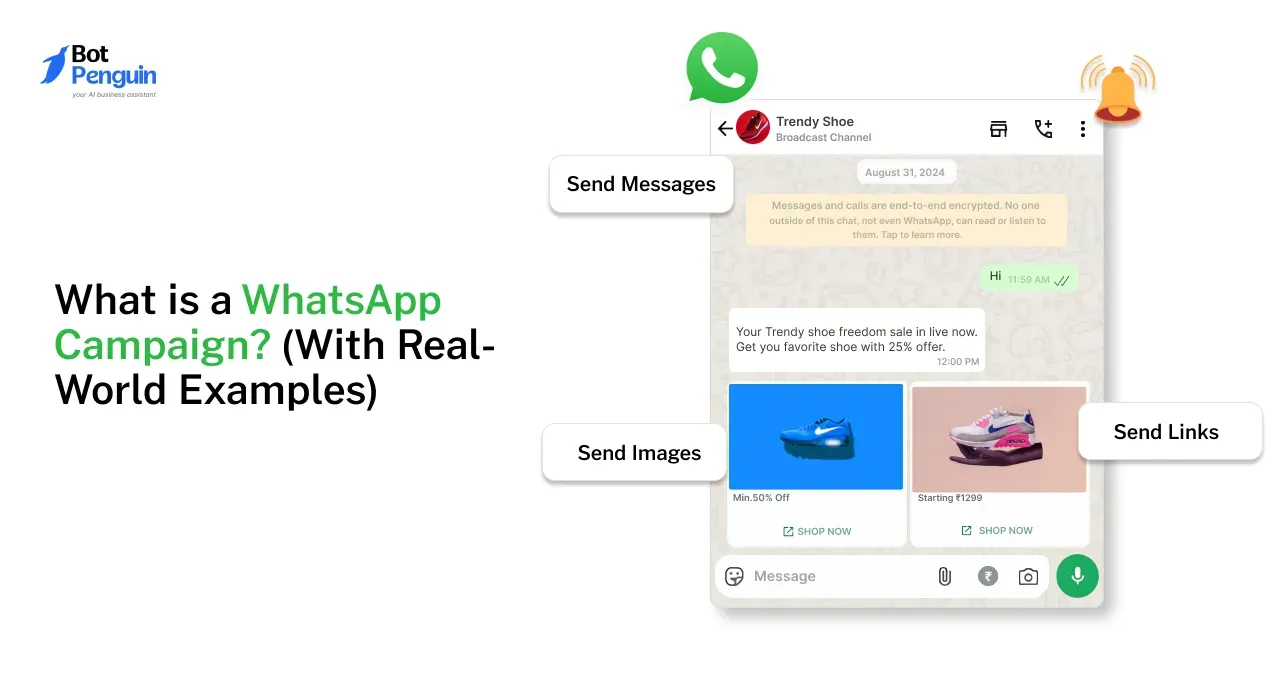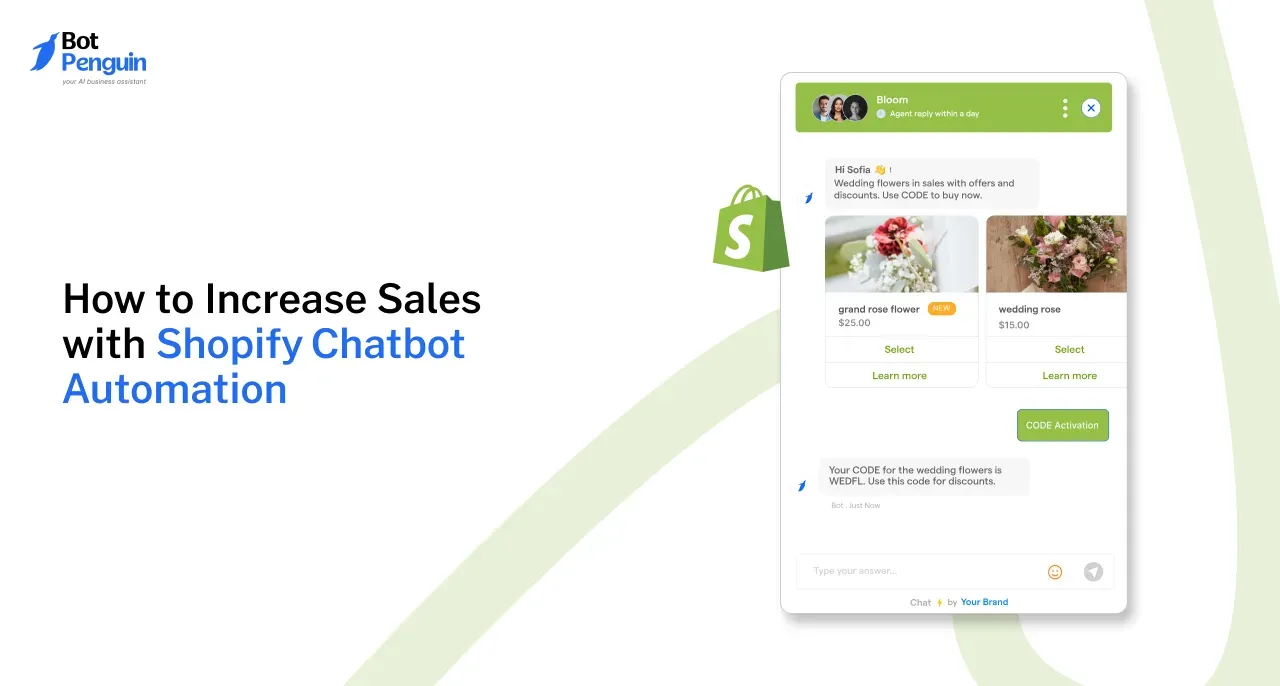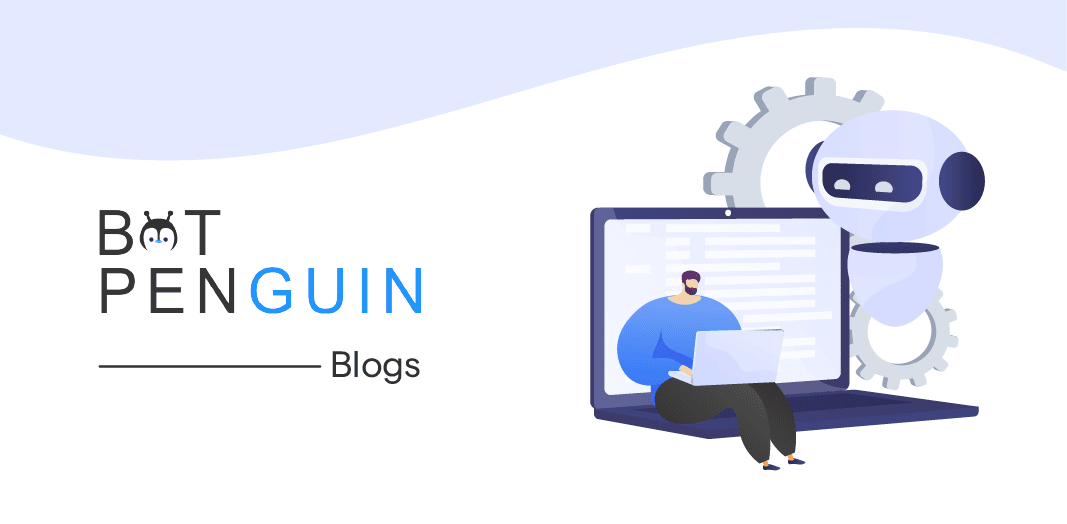Artificial Intelligence (AI) is reaching newer heights and is widely used in various industries. A subset of AI is Generative AI which is equally popular. If you give a prompt to this technology, it can provide excellent responses.
For example, if you want to create compelling content for your newly launched product, you can take the help of Generative AI. You don't have to spend hours looking for ideas to write content.
All you have to do is, enter a prompt saying that you want a catchy ad for your product along with its name. It will generate attractive content with which you can engage audiences greatly. According to a report by McKinsey, Generative AI use cases have increased in the marketing and sales industry.
Aren't you excited to know more about this technology? So, without further delay, let us explore more about Generative AI, its importance, and its use cases.
What is Generative AI?
Generative AI allows you to create various new content like text, video, image, audio, or a software code based on your prompts. Unlike traditional AI, which makes predictions by identifying data patterns, this technology produces new data as the output.
For example, if you want to prepare a speech for an occasion, you can just describe your idea or outline to this Generative AI tool. It will provide the entire text required for your speech within seconds. You no longer have to struggle for ideas.
How Does Generative AI Work?
Generative AI uses neural networks, machine learning, and deep learning algorithms to provide the desired outputs. When you give a prompt like an image, a video, a code, or a musical note to this tool, it recognizes the patterns and, based on this, delivers the results. It also responds instantly, while also ensuring that the quality of outputs is not compromised.
Generative AI is based on large language models (LLM). It also provides various forms of outputs like text-to-text, image-to-text, image-to-video, and text-image. You can find the results from Generative AI are very similar to human-like responses.
What is Generative AI vs LLM?
You have seen that Generative AI is based on LLM. But, have you ever wondered what is Generative AI vs LLM? An LLM is a type of AI, which is trained using large datasets to understand and produce text. Meanwhile, Generative AI consists of numerous tools that can use data from LLMs and other AI models to generate new content.
You can use LLMs for various activities that are based on text like content creation, personalization, and translation. Generative AI models can also perform these tasks but is not limited to them. It can create videos, compose music, and generate images.
Types of Generative AI Models
There are various types of Generative AI models. Each has its own benefits. Let us explore some of them below.
Variational Autoencoders (VAEs)
There are two neural networks in VAEs. One is the encoder, and the other is the decoder. Once you give an image as the input, the encoder understands the important features and characteristics of that image. Then, it compresses and stores the data.
The decoder uses this compressed information and reconstructs the original input data. This way, variational autoencoders learn how to generate new images that resemble their training data.
Generative Adversarial Networks (GANs)
In generative adversarial networks, the two neural networks are a generator and a discriminator. These two networks compete against each other. You can take the case of images as an example. Here, the generator creates an image, and the discriminator determines if it is original or generated.
These two networks train together. As the generator starts producing better images, the discriminator also gets better at recognizing them. This process is repeated until the generated image becomes identical to the original image.
Diffusion Models
There are two steps involved in diffusion models. They are forward diffusion and reverse diffusion. In forward diffusion, random noise is slowly added to the training data. In the reverse diffusion process, the noise is reversed to reconstruct the original data.
These models require more time for training when compared to VAEs or GANs. However, due to the forward and reverse diffusion process, these models provide the best quality outputs.
Transformer Models
These models are used to process sequential input data in a parallel manner while retaining their understanding of these sequences. There are two mechanisms that help this model to understand the relationship between words. They are self-attention and positional encodings.
A self-attention layer assigns each part of an input with a score. This score conveys how important that input is when compared to the other inputs. Positional encoding represents the order in which these input words should appear.
Benefits of Generative AI
Generative AI provides more efficiency to your business. A report estimates that the global market for generative AI is expected to exceed $325 billion by 2030.
With its ability to generate content and provide realistic responses within seconds, Generative AI can automate repetitive tasks, reduce costs, and save time and resources. Let us consider some of the benefits this technology provides.
Increased Productivity
You can use Generative AI to reduce the time your team spends on routine tasks like organizing data, drafting emails, or browsing the internet for basic details. Also, tasks that previously consumed lots of time and manpower, can be finished quickly and with fewer people when you use this technology.
For example, if there are some bugs or errors in your code, you might require several programmers to work on it to find out what went wrong. But, when you use Generative AI in this case, it might spot the issue within seconds and will also provide suggestions for fixing it. Hence, you can increase productivity by saving time and resources.
Reduced Costs
You can use Generative AI to speed up processes. For example, with manual resources, if you can complete a task in a week, and if Generative AI helps you to do it within a few days, then you can reduce the costs required for the processes. It can also minimize errors and spot redundancies.
Consider another example, where you have to test new products. When you use Generative AI, it can create advanced simulations which will help you to reduce the time and cost required to test these products.
Boosts Customer Satisfaction
You can use Generative AI to provide personalized experiences to customers. This can help them feel connected to your brand and make them feel satisfied greatly. They might also become your paying customers.
For example, if you own a fitness app, and a customer uses it and specifies that they want to reduce weight and the amount of time they can spend on it, then Generative AI will immediately provide them with a personalized workout plan with all the necessary details. Hence, you can meet their requirements and earn their loyalty.
Informed Decision-Making
You can use Generative AI to get a deeper understanding of market trends, risks, and the strategies to be followed to improve your business. Based on this, you can make informed decisions and have an edge over your competitors.
For example, if you are managing an e-commerce business, and want to launch a new product. You can use Generative AI to analyze market data and current trends. If you get results that customers are looking for eco-friendly products, you can plan to launch them accordingly and stay ahead of your competitors.
Applications of Generative AI
Generative AI helps to streamline your business processes. It can be useful for creatives, engineers, researchers, etc. Let us find out more about this below.
Content Creation
Generative AI provides excellent text results with the help of large language models. You can use it to write essays, generate codes, analyze grammar, translate, etc. For example, if you want a crisp introduction for your research paper, you can use Generative AI to create a draft for your topic.
Audio Models
Generative AI can be used to create songs, develop audio snippets based on text prompts, identify objects in videos, and develop custom music. For example, if you want to generate a unique background track based on a particular theme for your game, you can describe it, and Generative AI will deliver a suitable custom track.
Visual
In the visual domain, you can use Generative AI to create 3D images, avatars, and others. You can also edit visual images, design logos, and improve your existing images. For example, if you want to discover new drugs, you can use this technology to visualize new chemical compounds.
Entertainment
Generative AI can help you understand the latest trends and preferences of audiences. For example, if you want to release a new web series, you can use Generative AI to analyze data from social media, and user reviews to identify which is preferred most by the audience. Then, you can create scripts accordingly.
Generative AI Use Cases
Generative AI use cases are helping businesses effectively. Let us look at a few of them below.
Generative AI for Customer Support
You can use Generative AI for customer support and automate responses to customer queries. Once it receives a query, it searches for the answer in various sources like website links, CRM, and various customer databases. Hence, you can save time and resources and optimize your process.
Generative AI for Lead Generation
One of the best Generative AI use cases is for lead generation. You can use it to create effective marketing strategies like SEO-optimized blogs and social media updates to engage and nurture leads. It also helps you generate sales materials like brochures and sales scripts.
Generative AI for Marketing
You can use Generative AI for marketing and improve your targeting methods. It analyzes huge amounts of customer data within a short period. Based on this, you can understand your audience and provide a personalized experience.
Generative AI for Recommendation System
Generative AI for recommendation systems can help you create personalized activities based on customers' preferences, current location, and travel history. Hence, you can keep the customers engaged and satisfied.
Ethical Considerations of Generative AI
Though Generative AI offers many benefits, it also has a few concerns that have to be considered. Generative AI use cases in creating deepfake videos raise concerns about the possibility of deception and misinformation.
To address this, you can establish ethical guidelines and regulations to prevent the misuse of generative models.
Generative AI can also cause copyright and intellectual property issues, as it can create content that closely resembles existing works, which can raise questions about ownership and originality.
Impact on Employment and the Workforce
The automation capabilities of generative AI have the potential to impact certain job roles and tasks. You can find tasks like graphic design or music composition, which require manual intervention and also perform some repetitive activities. These may undergo changes with the introduction of Generative AI use cases.
However, this technology also creates new opportunities. It can complement human creativity, allowing professionals to explore new possibilities and focus on higher-level tasks that require critical thinking and decision-making.
You have to consider these impacts and maintain a balance between the benefits and potential risks associated with Generative AI.
You can use the technology's capabilities by addressing ethical considerations and preparing for potential workforce changes while minimizing negative impacts and ensuring its responsible use.
How Generative AI Learns and Improves?
You can find the learning method of Generative AI similar to that of a human artist who improves over time. It observes, learns, experiments, and fine-tunes its approach based on the results. The more data it sees, the more it learns.
For example, when Generative AI wants to learn to create an image of a cat. It starts by studying thousands of cat images. It notes down common features like whiskers, pointy ears, and a tail. Then this technology uses its learning to generate a new image - its version of a cat.
However, it may not be perfect during its first attempt. So, Generative AI uses feedback to improve. It checks how close is its output to real cat images. This process continues until it produces realistic results over time. This learning technique is not limited to images, but also for everything from writing text to composing music.
Generative AI is like a committed artist, constantly learning, experimenting, and perfecting its craft. The difference is this artist works at lightning speed, never sleeps, and only gets better over time.
By crafting ready-to-deploy AI chatbot solutions for multiple platforms, BotPenguin makes sure that your business reaches wherever your customers are:
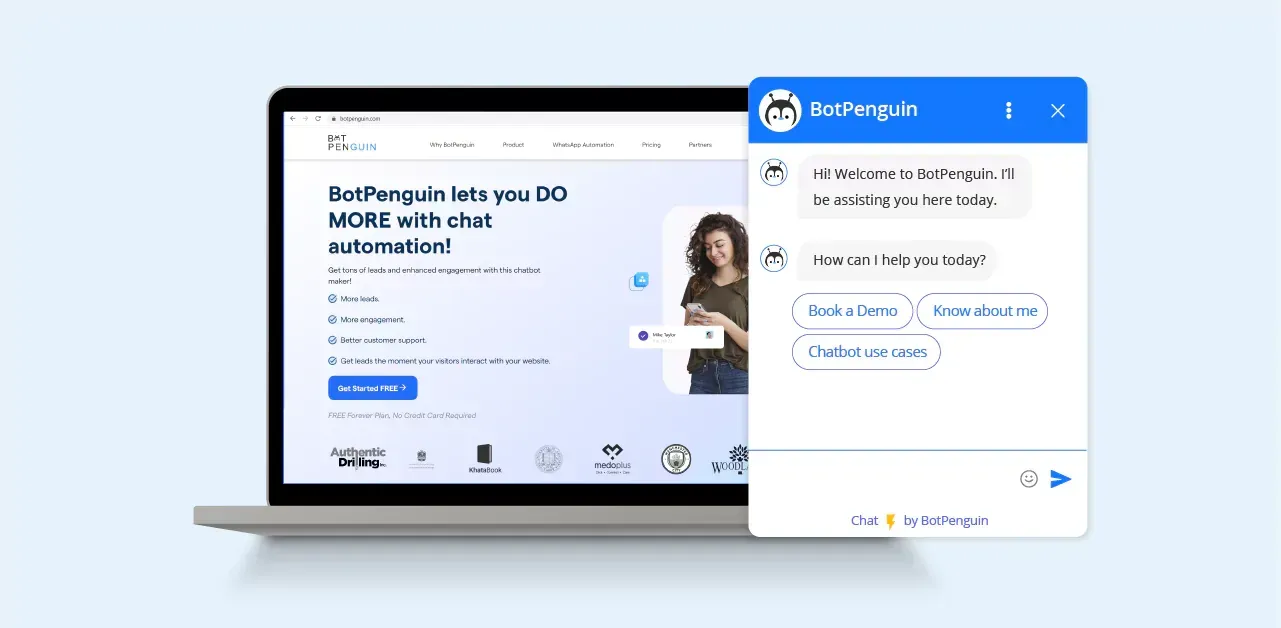
Generative AI and Data Security
While Generative AI opens up exciting possibilities, it also raises serious questions about data security.
Since Generative AI models require large amounts of data to learn from, they often deal with sensitive information. Hence, enough security measures are required to ensure this data isn't misused or mishandled.
One concern is data privacy. If an AI is learning from personal data, like emails or health records, there is a risk of this information being exposed or shared. This could lead to serious privacy breaches.
Another concern associated with Generative AI is its potential for creating deepfakes. These are fake images or videos that look startlingly real.
They are created by AI models that have learned to mimic real-life footage. This technology can be exploited to spread misinformation, fake news, or fraudulent activities.
Also, as AI systems become more complex and capable, there is also a risk of these systems being used to launch sophisticated cyber attacks.
An intruder could potentially use a Generative AI model to mimic a user's behavior or to generate convincing phishing emails.
So, how can you reduce these risks? You can provide transparency in Generative AI learning. Clear, understandable records of what data AI has access to and how it is using that data can help greatly. You can also use encrypted data to add an extra layer of security.
The next option is to perform regular security audits to identify potential vulnerabilities. While there are certain challenges like data security in Generative AI use cases, if you take the right precautions, you can enjoy its full benefits.
Suggested Reading:
Reshaping Education: Generative AI in Learning & Development
Addressing Common Myths About Generative AI
Generative AI is being widely used in various industries. Yet, there are some myths and misconceptions that surround this technology. Let us explore.
Myth 1: Generative AI Will Replace Human Creativity
Truth: Though Generative AI can create impressive art or music, it cannot replace human creativity. Instead, it complements your own creative talents. It is a tool that helps you explore new ideas, identify patterns, and push the boundaries of your imagination.
Myth 2: Generative AI Always Produces the Right Content
Truth: With Generative AI ruling businesses, it is common to trust and depend on it more. However, though it can produce incredible content, it still has its own flaws. Since this technology learns from data, it can only replicate patterns, themes, and techniques it has observed. Additionally, the quality of its output depends on the quality of data it learns from. Hence, Generative AI can sometimes produce meaningless results.
Myth 3: Generative AI is Inherently Biased
Truth: Generative AI is not inherently biased. However, it can learn biases from the data it is trained on. If a Generative AI model is trained with data containing biases, then it will tend to replicate those same biases in its output. Hence, you should ensure you provide the model with fair, balanced, and diverse data sets to minimize this issue.
Myth 4: Generative AI Can Only Create, But Cannot Learn or Adapt
Truth: Generative AI models are continually learning and adapting. They use a feedback loop to refine their results based on previous outputs. It is this iterative process that allows it to produce more accurate or visually appealing results over time.
Future of Generative AI
Generative AI is a rapidly evolving field, and it has lots of future possibilities. Let us explore some advancements and implications for the technology:
Advancements
As Generative AI continues to improve, you can expect more sophisticated models that can generate more complex and diverse content. There may be advancements made in creating more efficient and effective training algorithms, which allow for faster and more accurate training of generative models.
Also, advances in the interpretability of generative models will help users to understand better and control the content generated.
Potential Breakthroughs
One potential breakthrough you can expect is the creation of Generative AI models that can reason about the content they generate. This can make them produce content that is diverse, novel, more coherent, and meaningful.
Another potential breakthrough could be developing generative models that account for user preferences and feedback, enabling more personalized and tailored content creation.
Conclusion
Generative AI is an exciting field that can bring out the best in various industries, from art and design to medicine and healthcare. Its ability to automate complex tasks and enhance creativity and innovation transforms how we approach problem-solving and content creation.
While the technology offers great benefits, you also have to consider its ethical and social impacts. Guidelines and regulations must be established to ensure the responsible and ethical use of Generative AI.
You can expect more advancements and potential breakthroughs in Generative AI, resulting in new and innovative applications.
Platforms like BotPenguin provide intuitive drag-and-drop chatbot builders for popular platforms like WhatsApp, Facebook Messenger, Website, and more. Our natural language processing is powered by advanced generative models like GPT-3 to enable human-like conversations.
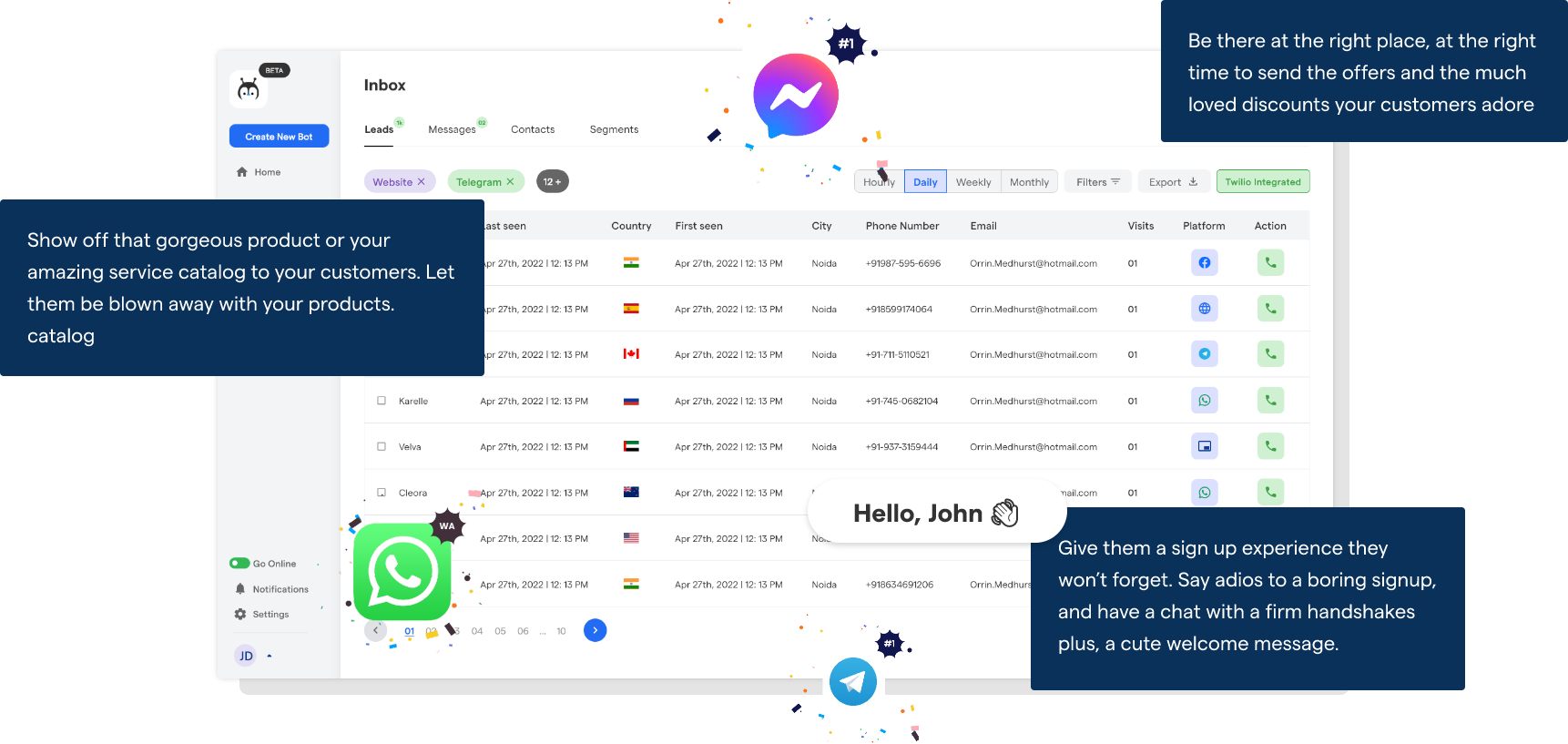
Frequently Asked Questions (FAQs)
What are the ethical concerns or risks involved while using Generative AI?
If there is bias in training data, Generative AI may learn from it, and produce unfair results. It can also cause copyright and intellectual property issues, as it can create content that closely resembles existing works. Hence, it may result in ownership issues.
What are the benefits of Generative AI?
Generative AI can simplify complex tasks, automate creative processes, and unlock new creative possibilities. It can help designers, artists, and musicians generate novel and unique content while accelerating the iterative design process.
How is Generative AI being used today?
Generative AI is used in various fields, from art and design to medicine and healthcare. It can assist in drug discovery, create new and unique visual artworks, and even compose music and generate dialogue and narratives for video games.
What are the implications of Generative AI on the workforce?
Generative AI has the potential to automate certain job roles or tasks, impacting industries that rely on manual and repetitive tasks. However, it also creates new opportunities and can complement human creativity, allowing professionals to focus on higher-level tasks.
What does the future hold for Generative AI?
As the technology continues to improve, we can expect more sophisticated generative models capable of generating more diverse and complex content. Advancements in interpretability and user control may also lead to more personalized content creation.

